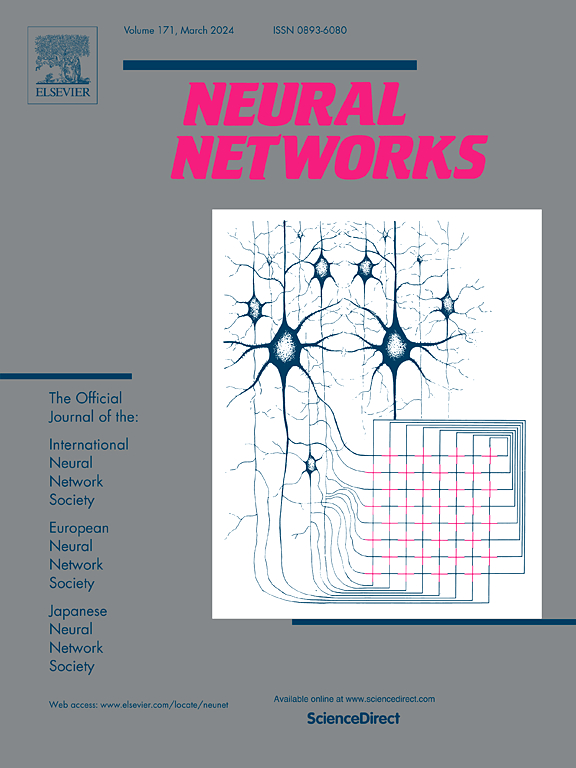链接预测的时态多模态知识图生成。
IF 6
1区 计算机科学
Q1 COMPUTER SCIENCE, ARTIFICIAL INTELLIGENCE
引用次数: 0
摘要
时间多模态知识图(TMMKGs)可以看作是时间知识图(TKGs)和多模态知识图(MMKGs)的综合,结合了两者的特点。TMMKGs可以有效地模拟动态的现实世界现象,特别是在涉及多个异构信息源和时间序列特征的场景中,例如电子商务网站、场景记录数据和智能交通系统。本文提出了一种时序多模态知识图生成方法(TMMKGG),该方法可以自动构建时序多模态知识图,以降低构建成本。为了支持这一点,我们构建了一个动态的视觉-听觉-语言多模态(VALM)数据集,该数据集特别适合于根据时间多模态感知数据提取结构化知识。TMMKGG探索时间动态和跨模态集成,实现动态知识图生成的多模态数据处理,并利用对齐策略增强场景感知。为了验证TMMKGG的有效性,我们将其与使用VALM数据集的最先进的动态图生成方法进行了比较。此外,与tkg相比,TMMKG在新引入实体与其相关新引入边缘的比例方面表现出显着差异。基于这种现象,我们引入了一种时间多模态链接预测(tmlp)方法,该方法优于现有的最新技术。本文章由计算机程序翻译,如有差异,请以英文原文为准。

Temporal multi-modal knowledge graph generation for link prediction
Temporal Multi-Modal Knowledge Graphs (TMMKGs) can be regarded as a synthesis of Temporal Knowledge Graphs (TKGs) and Multi-Modal Knowledge Graphs (MMKGs), combining the characteristics of both. TMMKGs can effectively model dynamic real-world phenomena, particularly in scenarios involving multiple heterogeneous information sources and time series characteristics, such as e-commerce websites, scene recording data, and intelligent transportation systems. We propose a Temporal Multi-Modal Knowledge Graph Generation (TMMKGG) method that can automatically construct TMMKGs, aiming to reduce construction costs. To support this, we construct a dynamic Visual-Audio-Language Multimodal (VALM) dataset, which is particularly suitable for extracting structured knowledge in response to temporal multimodal perception data. TMMKGG explores temporal dynamics and cross-modal integration, enabling multimodal data processing for dynamic knowledge graph generation and utilizing alignment strategies to enhance scene perception. To validate the effectiveness of TMMKGG, we compare it with state-of-the-art dynamic graph generation methods using the VALM dataset. Furthermore, TMMKG exhibits a significant disparity in the ratio of newly introduced entities to their associated newly introduced edges compared to TKGs. Based on this phenomenon, we introduce a Temporal Multi-Modal Link Prediction (TMMLP) method, which outperforms existing state-of-the-art techniques.
求助全文
通过发布文献求助,成功后即可免费获取论文全文。
去求助
来源期刊

Neural Networks
工程技术-计算机:人工智能
CiteScore
13.90
自引率
7.70%
发文量
425
审稿时长
67 days
期刊介绍:
Neural Networks is a platform that aims to foster an international community of scholars and practitioners interested in neural networks, deep learning, and other approaches to artificial intelligence and machine learning. Our journal invites submissions covering various aspects of neural networks research, from computational neuroscience and cognitive modeling to mathematical analyses and engineering applications. By providing a forum for interdisciplinary discussions between biology and technology, we aim to encourage the development of biologically-inspired artificial intelligence.
 求助内容:
求助内容: 应助结果提醒方式:
应助结果提醒方式:


